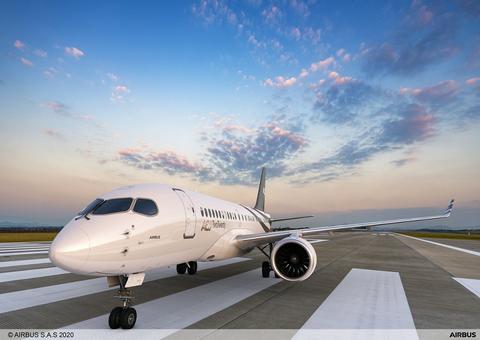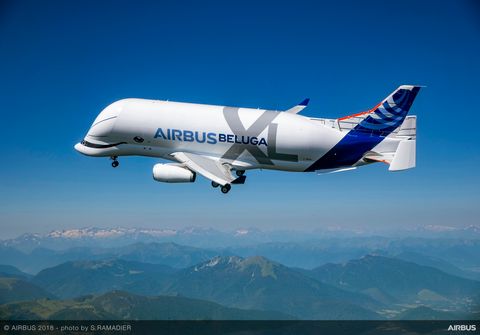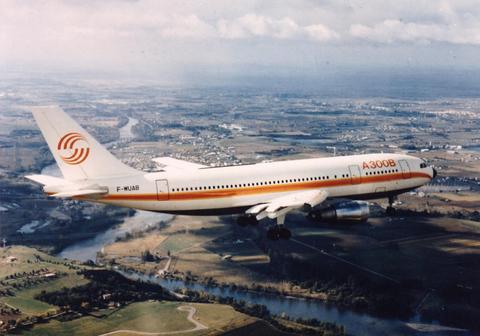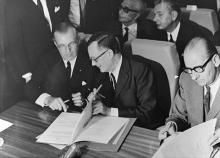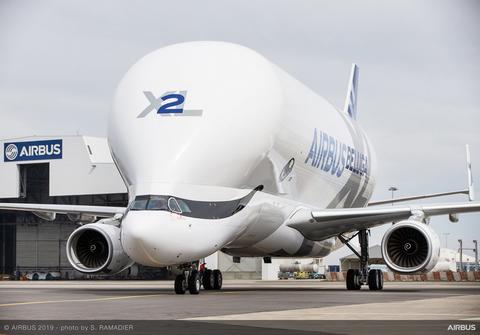Airbus began the new decade bolstered by the company’s strong commercial performance in 2019 – including a record-setting 863 deliveries and the logging of 1,131 new orders – as well as the continued evolution of its comprehensive aircraft product line.
Continued global demand for A320neo
New commercial announcements in the first month of 2020 reinforced the popularity of Airbus’ single-aisle A320neo Family.
Announced in January, Spirit Airlines finalised a purchase agreement with Airbus for 100 A320neo Family aircraft – including a mix of A319neo, A320neo and A321neo versions – to meet this U.S. operator’s future fleet requirements.
Spirit is based in South Florida and is the fastest-growing airline in the United States, with flights throughout the U.S., Latin America and the Caribbean.
Later in January, Singapore-based lessor BOC Aviation Limited placed a firm order for 20 A320neo aircraft – with as many as 12 of them to be operated on lease by Colombia’s Avianca Airlines.
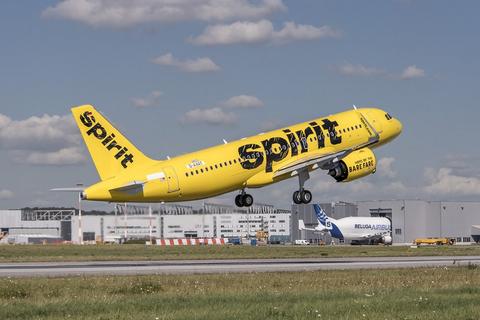
New delivery benchmarks for Airbus’ A320 Family
Underscoring the continued popularity of its single-aisle product line, Airbus delivered the A320 Family aircraft with manufacturer serial number (MSN) 10,000 in October – with this milestone A321neo received by Middle East Airlines.
The achievement came just eight years after Airbus’ handover of the A320 Family aircraft with manufacturer serial number 5,000.
To underscore Airbus’ industrial advancement over the decades, it took the company nearly three-times as long to reach the first 5,000-mark.
Another product line milestone occurred in October with handover of the 500th A320 Family aircraft produced at Airbus’ final assembly line in Tianjin, China: an A320neo version delivered for operation by China Southern Airlines.
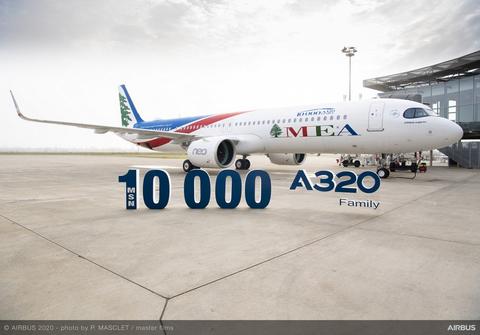
First converted A321P2F gets to work with Qantas
The first converted aircraft in Airbus’ A321 passenger-to-freighter programme entered service with Australian operator Qantas in October, following delivery by Elbe Flugzeugwerke (EFW) – the joint venture created by Airbus and ST Engineering.
It will be operated on behalf of Australia Post, which provides mail services across the country.
Airbus’ A321P2F freighter is the first in its size category to offer containerised loading in both the main (up to 14 full container positions) and lower deck (up to 10 container positions).
Including a generous payload-range capability that can carry 28 metric tonnes over 2,300 nautical miles, the A321P2F is the ideal single-aisle freighter aircraft for express domestic and regional operations.
It is to be complemented in the future by a A320P2F version based on Airbus’ A320.
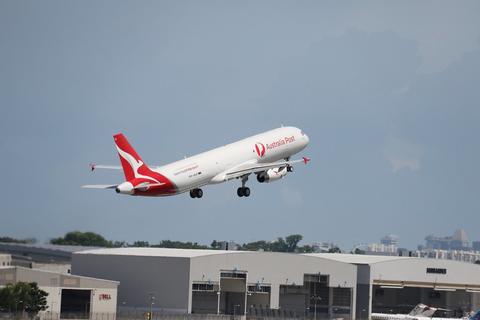
Expansion of production resources
As part of its strategy to step up – and reinforce – production resources for the best-selling A320 Family, Airbus announced two developments in January. These steps will enable Airbus to increase flexibility, while also ensuring that production capacity for the longest-fuselage A321 version meets market demand.
At the company’s U.S. Manufacturing Facility in Mobile, Alabama, Airbus will increase the A320 Family production rate to seven aircraft per month by the beginning of 2021. This increase – along with continued recruiting for the manufacturing team that supports production of the smaller single-aisle A220 jetliner at Mobile – will result in a further 275 jobs added at the Alabama-based facility during 2020.
In Europe, Airbus has decided to create new production capabilities at its site in Toulouse, France, providing more flexibility for the production of A321 versions – driven in part by the popularity of the Long Range (LR) and Xtra Long Range (XLR) derivatives. This will involve the establishment of a digitally-enabled A321 final assembly line in the Lagardère facility at Toulouse (which serves as the site for assembly of double-deck A380s).
Toulouse is home to the original A320 Family final assembly line, with aircraft built at this location in southwest France since the 1980s. In response to the A320 product line’s global success, additional final assembly lines were subsequently established by Airbus at Hamburg, Germany; Tianjin, China; and in the U.S. at Mobile, Alabama. Currently, A321 versions are built at Hamburg and Mobile.
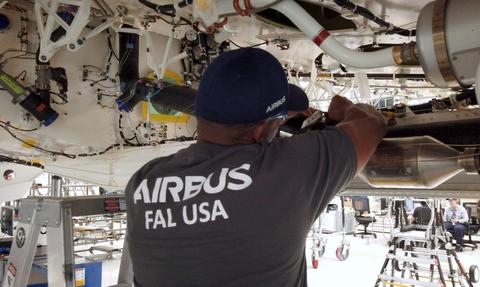
Bringing a “smile” to Airbus production
The January service entry of Airbus’ first operational BelugaXL brought a significant boost to the company’s production network, which was reinforced in October as a second of these oversize cargo airlifters joined the in-service fleet.
Ultimately, six Beluga XLs (derived from the twin-engine A330 jetliner) will operate from 11 destinations in Europe – providing additional transport capacity as they gradually replace five previous-generation Beluga ST versions (which were modified from the earlier A300 aircraft).
Managed by the Airbus Transport International (ATI) subsidiary, the BelugaXLs support Airbus’ ongoing production across its commercial aircraft programmes.
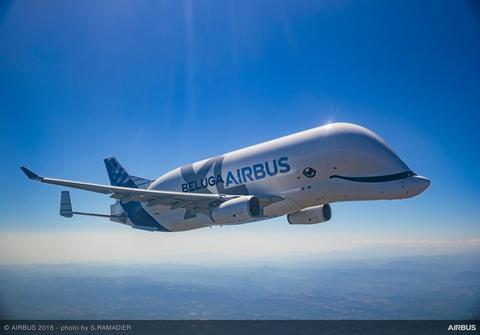
Committed to the A220
In February, Airbus and the Government of Québec became sole owners of the A220 programme as Bombardier completed its strategic exit from the commercial aviation sector.
The new agreement brought shareholdings in the Airbus Canada Limited Partnership – responsible for A220 aircraft production – to 75% for Airbus and 25% for the Government of Québec. It also underscored the partners’ continued commitment to the single-aisle programme, which includes A220-100 and A220-300 versions.
As part of the transaction, Airbus – via its wholly-owned subsidiary STELIA Aerospace –also acquired the A220 and A330 work package production capabilities from Bombardier in Saint-Laurent, Québec.
February also brought a significant A220 commercial announcement with Nigeria-based Green Africa Airways’ memorandum of understanding for 50 A220-300 aircraft – marking one of the A220 programme’s major orders to be placed globally.
October marked a major industrial milestone with delivery of the first U.S.-assembled A220 – an A220-300 version – to Delta Air Lines from Airbus’ facility in Mobile, Alabama.
This U.S.-based carrier is the largest A220 customer and will be the first A220 operator in the Americas to operate both the A220-100 and A220-300 aircraft types.
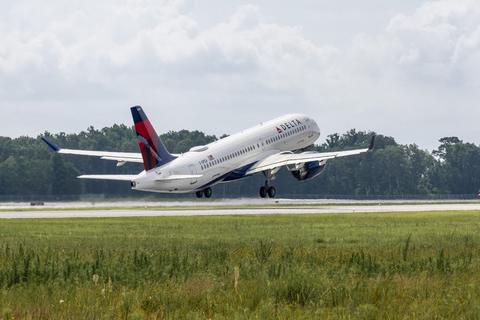
Enhancing Airbus’ U.S. footprint
In May, the A220 programme gained further momentum with inauguration of this aircraft’s 270,000-square-foot production facility at the company’s U.S. industrial site. Located at Mobile, Alabama, the new final assembly line can build both A220-100 and A220-300 versions of Airbus’ newest addition to its single-aisle product line.
The Mobile industrial location – which officially is called the Airbus U.S. Manufacturing Facility – became the A220’s second assembly site, complementing the primary assembly facility and programme headquarters located in Mirabel, Canada.
With this inauguration, Airbus’ production “footprint” in the U.S. state of Alabama officially doubled in size, expanding the Airbus U.S. Manufacturing Facility, which has been building A320 Family aircraft since 2015.
Airbus celebrated five years of production at Mobile in September. During this period, the facility has grown from an initial workforce of around 250 staff. With the Airbus U.S. Manufacturing Facility, Airbus has become a major economic driver in creating an aerospace hub on the U.S. Gulf – injecting some $1.2 billion into the economy and supporting more than 15,000 jobs overall.
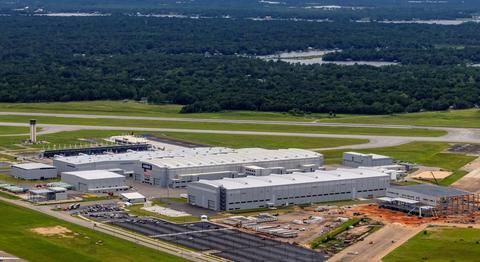
A330-800: certified for flight
Airbus’ A330-800 – the most efficient and longest-range entry-level widebody aircraft in the world – received joint Type Certification from the European Aviation Safety Agency (EASA) and the Federal Aviation Administration (FAA) in February.
This achievement came after the conclusion of a rigorous test programme that involved 370 flight hours in total.
Certified initially with a maximum take-off weight (MTOW) of 242 tonnes for a range capability of up to 7,500 nautical miles, the A330-800 will typically seat 220 to 260 passengers in three classes, or up to 406 travellers in a single-class high-density configuration.
The A330-800 is part of Airbus’ new-generation A330neo family.
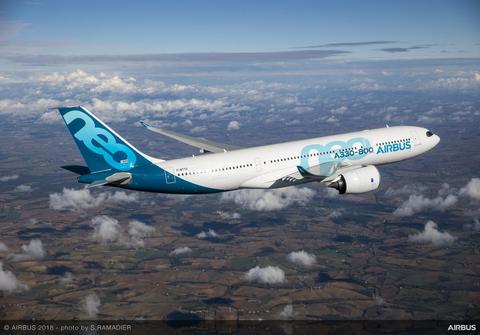
EASA approves the A330-900 with increased take-off weight
In October, Airbus announced the European Union Aviation Safety Agency (EASA) certification of the A330-900’s 251-metric tonne Maximum Take-Off Weight (MTOW) variant – which responds to evolving market needs by enabling airlines to benefit from the A330neo’s unique economics on even longer flights.
This new A330neo variant offers a significant 650-nautical mile boost in range – or six tonnes more payload – when compared with the A330-900’s 242-tonne version.
In achieving the 251 metric tonne capability, Airbus retained 99% spares commonality, as this MTOW increase was facilitated through a combination of weight-neutral structural reinforcements and landing gear adaptations.
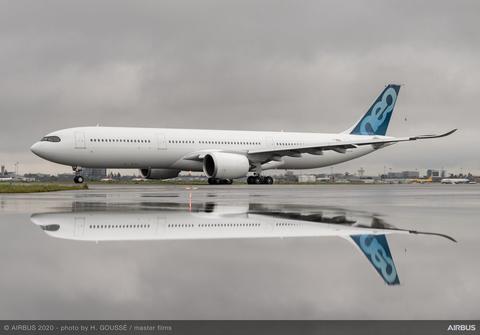
Introducing the ACJ TwoTwenty
The month of October marked Airbus Corporate Jets’ launch of its ACJ TwoTwenty with the announcement of six orders for this game-changing business jet – which combines intercontinental range, unparalleled personal space and maximum comfort for everyone on board.
Based on Airbus’ A220-100 commercial aircraft, the ACJ TwoTwenty will have an increased range for trips of up to 5,650 nm/10,500 km (the equivalent of more than 12 flight hours) while
delivering unbeatable economics and unrivalled reliability. It offers three-times more cabin space than competing business jets, with a one-third reduction in operating costs.
